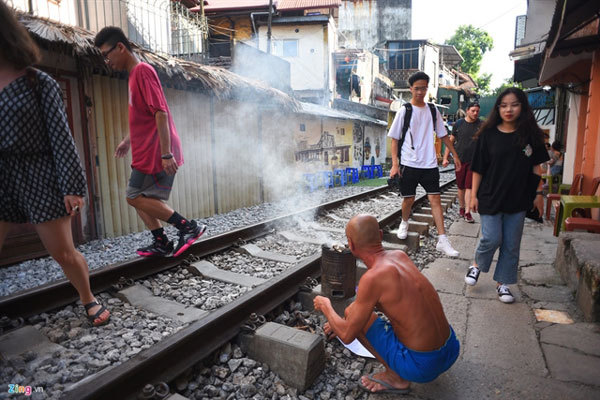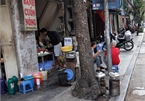 |
| Honeycomb charcoal stoves are being used widely in Hanoi's inner areas. Photo news.zing.vn |
Speaking about plans to eliminate the use of honeycomb charcoal stoves by 2021, a representative from the sub-department told online newspaper news.zing.vn that as of the end of last month, the number of stoves has decreased by 58 per cent compared to 2017.
However, more than 23,000 stoves are still used each day.
In 2017, the total number of stoves was 55,000. Most are used in the inner city – up to 63 per cent – while the rest are located in suburban districts.
Hoang Duong Tung, former deputy director of the Vietnam Environment Administration and President of Vietnam Clean Air Network said the massive use of honeycomb charcoal stoves was a key cause of bad air quality in urban areas.
He said the inner city was crowded, while the use of honeycomb charcoal stoves often occurred in densely populated areas, such as apartment buildings.
Emissions from honeycomb charcoal stoves, together with exhaust fumes and construction dust, worsened the air quality.
Tung said smoke from kitchens also affected the health of those nearby because it contained toxic fumes. The city has recorded several deaths due to the smoke from this type of stove.
However, he said, honeycomb charcoal stoves were not the main cause of air pollution in the city.
Three years ago, the number of stoves in the city was more than 60,000. The number has fallen to 23,000, but air quality has not improved.
Tung said cutting two-thirds of the stoves in recent years was a great success, but it was not enough.
To improve air quality, it was necessary to have drastic solutions and implement them consistently, he said.
Hanoi plans to completely eradicate the use of honeycomb charcoal by 2021 as part of its efforts to curb worsening air pollution.
According to a directive signed by Chairman of Hanoi People’s Committee Nguyen Duc Chung, the city will provide support for citizens to stop the use of honeycomb briquette stoves by the end of 2020, and any further usage of the cheap but polluting fuel will be subject to penalties a year later.
Honeycomb briquettes, also known as beehive briquettes, get their name from the shape which looks like a honeycomb. It is a very common charcoal fuel in domestic use in Vietnam, though prevalence in modern cities has decreased sharply over the decades. — VNS

Hanoi vows to eliminate honeycomb charcoal stoves
The image of honeycomb charcoal stoves is common on many streets in Hanoi, from big streets to narrow alleys. However, it is the "silent assassin" that pollutes the air and seriously affects human health.

Hanoi vows to remove deadly stoves by 2020
Hanoi authorities have taken more drastic actions to end the use of beehive-shaped coal stoves by 2020 as part of measures to improve air quality and living conditions.
 Hanoians still use more than 23,000 honeycomb charcoal stoves every day, Hanoi’s Sub-department of Environmental Protection said." itemprop="description" />
Hanoians still use more than 23,000 honeycomb charcoal stoves every day, Hanoi’s Sub-department of Environmental Protection said." itemprop="description" />